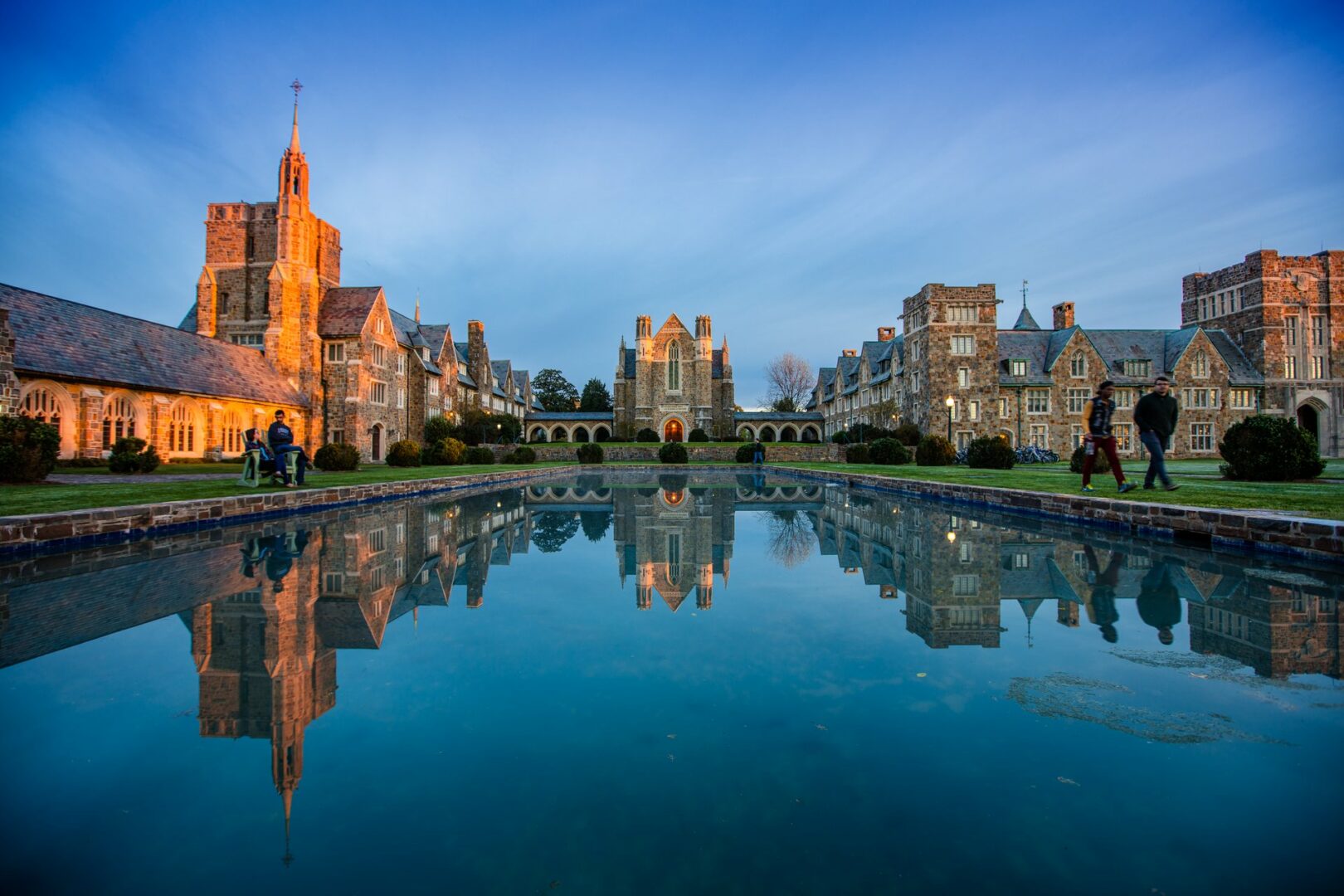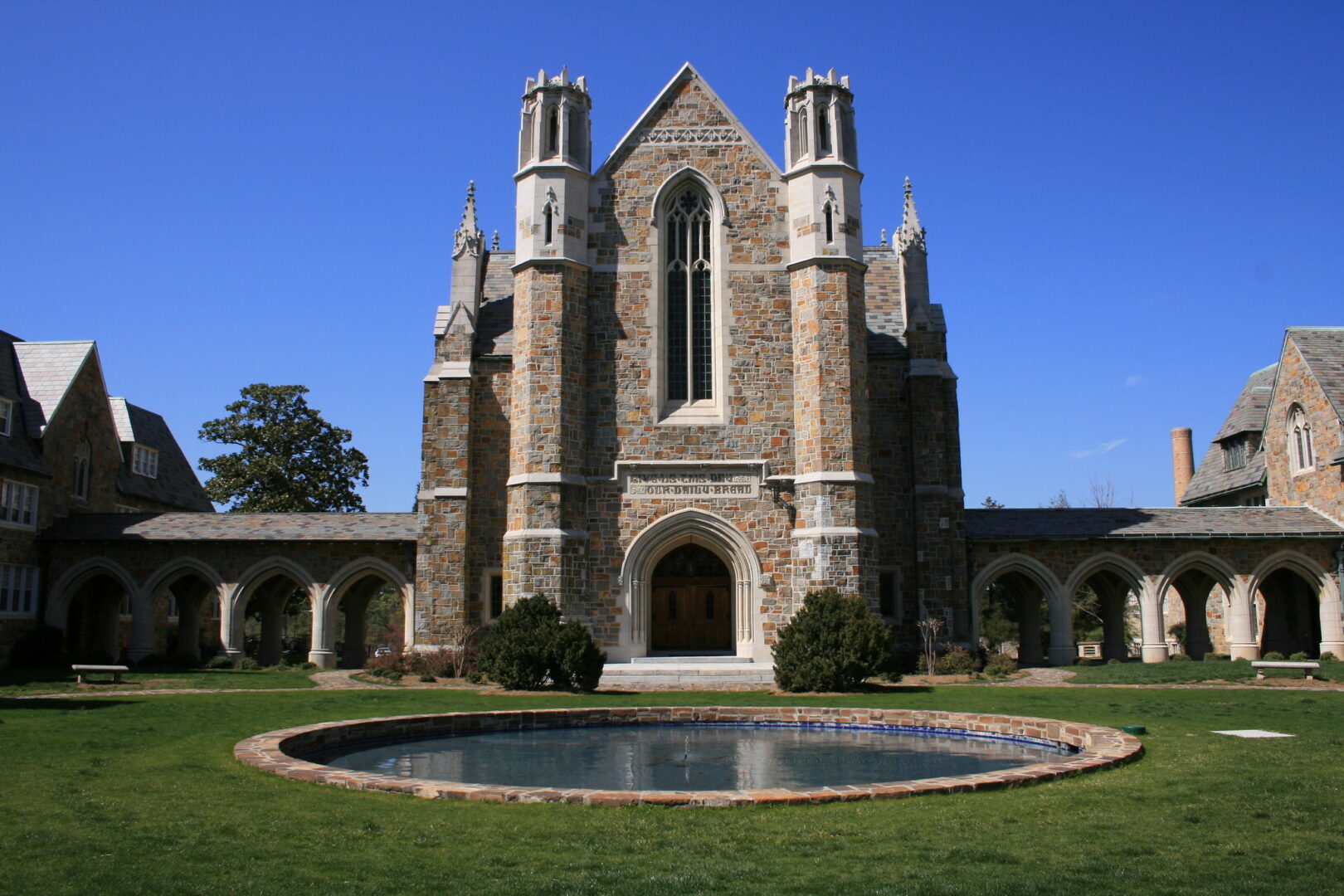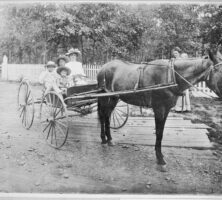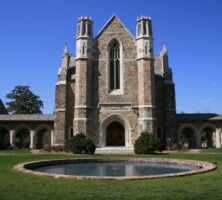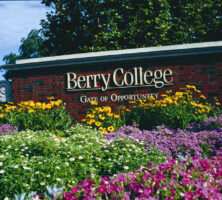Berry College is a comprehensive liberal arts college located just north of Rome. Founded by Martha Berry, the college was one of several “Berry Schools” that were established to provide poor children in the north Georgia mountains with the opportunity to earn an education. Though the others have long closed, the college continues to enjoy a reputation as a respected regional institution.
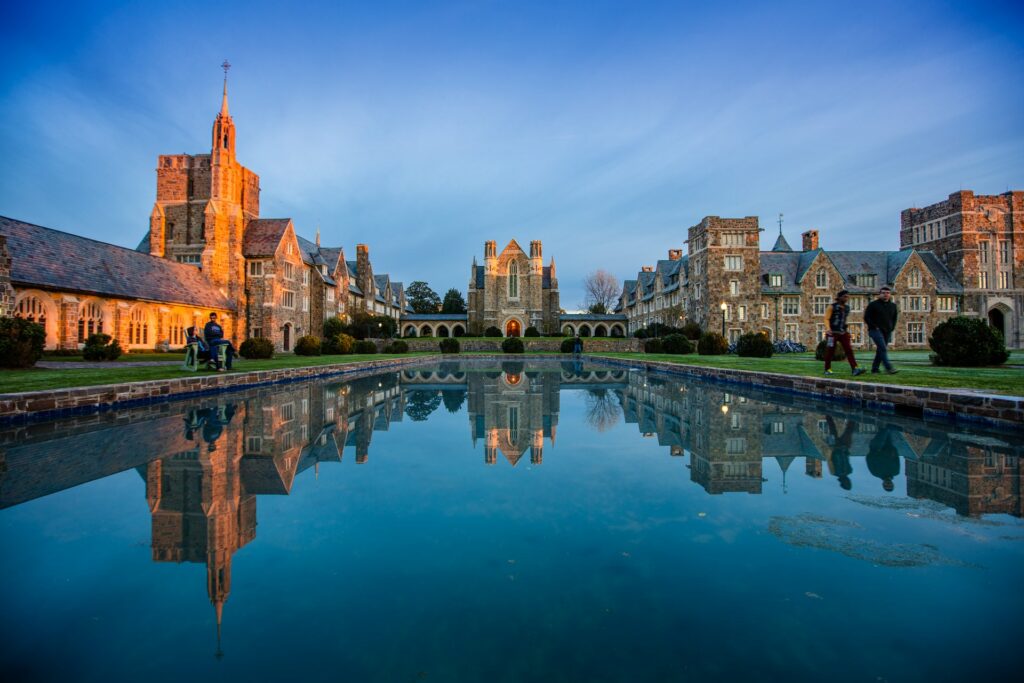
Courtesy of Explore Georgia.
The Early Years (1902-1942)
The daughter of a wealthy Floyd County planter, Martha Berry first became sensitive to the impoverished condition of many of the people who lived in the area’s mountains when some young boys stumbled upon the private cabin retreat where she had gone to read her Bible. Berry was shocked to learn that the children attended neither church nor school and that they were unfamiliar with basic Bible stories. Her willingness to offer them rudimentary instruction soon developed into a Sunday school that attracted numerous children from neighboring families. Berry then established four day schools, but after these schools appeared ineffective she decided in 1902 to use the eighty-three acres that she had inherited from her father to found the Boys’ Industrial School, a boarding school that she believed would keep students in a supportive environment. Eventually, Berry’s endeavor grew to include a girls’ school (1909) and a junior college (1926). The junior college later expanded into a senior college, which graduated its first class in 1932.
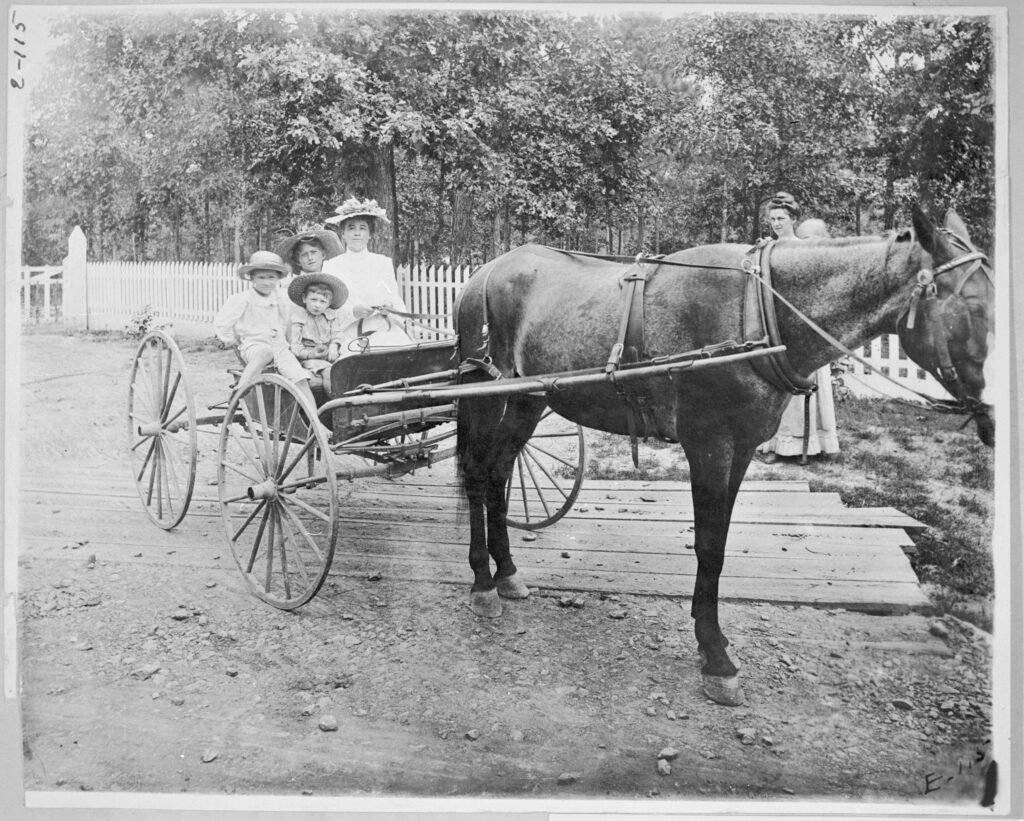
Courtesy of Hargrett Rare Book and Manuscript Library, University of Georgia Libraries.
Berry wanted only rural children to attend her schools; she refused to admit students from urban areas, including nearby Rome. From its inception the Berry program emphasized the regenerative power of work. Diligent labor, she believed, would promote character in her students by encouraging responsibility and a sense of self-worth. Beginning in 1914, students at the schools would work each week for eight hours on two consecutive days and attend classes on four other days. The work program helped to keep operating costs low, as students constructed the campus and maintained its facilities, and allowed students to use their labor to pay all of their tuition and expenses.
The academic curriculum followed Berry’s declaration that the schools should promote an education of “the head, the heart, and the hands.” Courses were offered in arts and sciences, but the boys’ and girls’ schools both emphasized training in industrial, agricultural, and domestic arts. The college offered advanced courses in these fields, along with teacher and business training. In accordance with Berry’s faith, students were required to take courses on religious topics and to subscribe to a strict moral code. They also attended three weekly chapels and an interdenominational service on Sundays. Though a conservative Protestantism defined Berry’s beliefs, the schools’ religious teachings placed greater emphasis on service than on theology, as reflected by the adoption of the biblical admonition “not to be ministered unto but to minister” as their motto.
Self-help ideals and Berry’s relentless fund-raising efforts made the schools an attractive cause for the nation’s political and social elite. Substantial contributions—including the donation of several buildings by the automobile manufacturer Henry Ford—helped to keep the schools in operation despite tight budgets. In 1942 the college received from artist and Georgia native Nell Choate Jones a donation of more than a dozen paintings by prominent American artists.
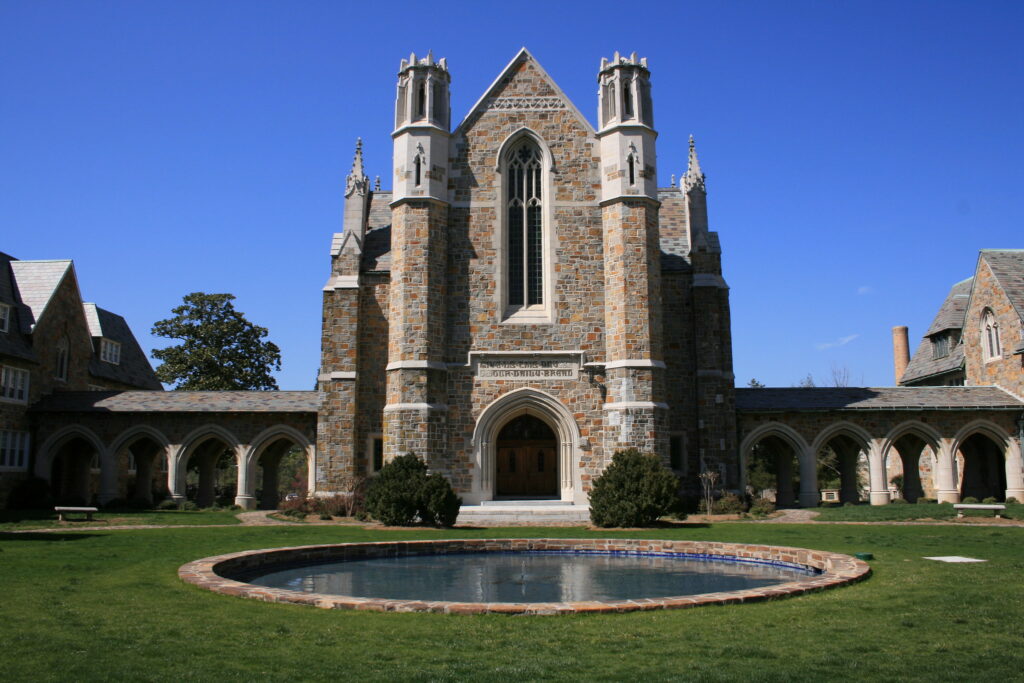
Image from Stephen Rahn
Berry also approved land purchases in Floyd County as a way to promote the institution’s long-term financial security. By the 1930s the schools owned nearly 30,000 acres and possessed the largest campus of any educational institution. Martha Berry, meanwhile, gained national renown for her schools, including recognition in 1930 from Good Housekeeping magazine as one of the nation’s twelve most influential women.
The College since 1942
Martha Berry’s death in 1942 deprived the schools of their central figure as they entered their most difficult period. Without the founder’s personal appeals, contributions declined. After World War II (1941-45), economic development and expanding public education facilities led many to believe that the schools’ mission had become obsolete. Declining enrollment and high costs led to the closing of the girls’ school in 1955. The college and boys’ school likewise wrestled with these problems, and unstable leadership—three presidents and two acting presidents served over a twelve-year period—proved unable to satisfy alumni and supporters’ concerns that changes would signify a departure from Berry’s original vision.

Courtesy of Explore Georgia.
Ultimately, the trustees concluded that the best hope for Berry’s legacy lay in the development of the college. Under the leadership of John R. Bertrand, who was appointed president in 1956, the college continued to offer vocational training but concentrated on improving the liberal arts and professional programs to competitive levels. After gaining accreditation from the Southern Association of Colleges and Secondary Schools in 1957, the college modified the existing work-study schedule in order to place greater emphasis on the academic program. Soon afterward it opened admission to qualified students from urban areas, and as more nontraditional students and commuters with off-campus jobs were admitted, the work requirement was gradually phased out. Through the 1960s and early 1970s the college enacted several other reforms, including paying student workers rather than crediting their accounts, modifying the strict code on student behavior, abandoning uniform dress and mandatory religious services, and holding national searches for faculty members. By the late 1980s several publications regularly ranked Berry College as one of the Southeast’s top five regional liberal arts institutions. Meanwhile, the boys’ school—renamed the Berry Academy in 1964—became coeducational in 1971 but continued to struggle with high costs and low enrollment until it closed in 1983.
Through these years the college continued to operate on tight finances, despite the sale of some of its lands for local development. This money was invested in restricted funds that helped build the endowment to about 185th among educational institutions nationally by 1999. Gloria M. Shatto, who succeeded Bertrand as president in 1980, continued to work on securing the institution’s financial stability, and the college still owns more than 26,000 acres. By the 1990s Berry College annually enrolled approximately 1,800 undergraduates and roughly 200 students in its business and education graduate programs; enrollment numbers remain about the same today.
True to the founder’s ideals, the trustees strive to keep tuition lower than that of comparable institutions, and each class still contains a large proportion of first-generation college students. Most students continue to work on campus for experience and spending money, and the Religion-in-Life program encourages them to participate in local churches and in volunteer service activities. In 1998 John Scott Colley assumed the presidency, and upon his retirement in 2006, Stephen R. Briggs became the school’s eighth president.





